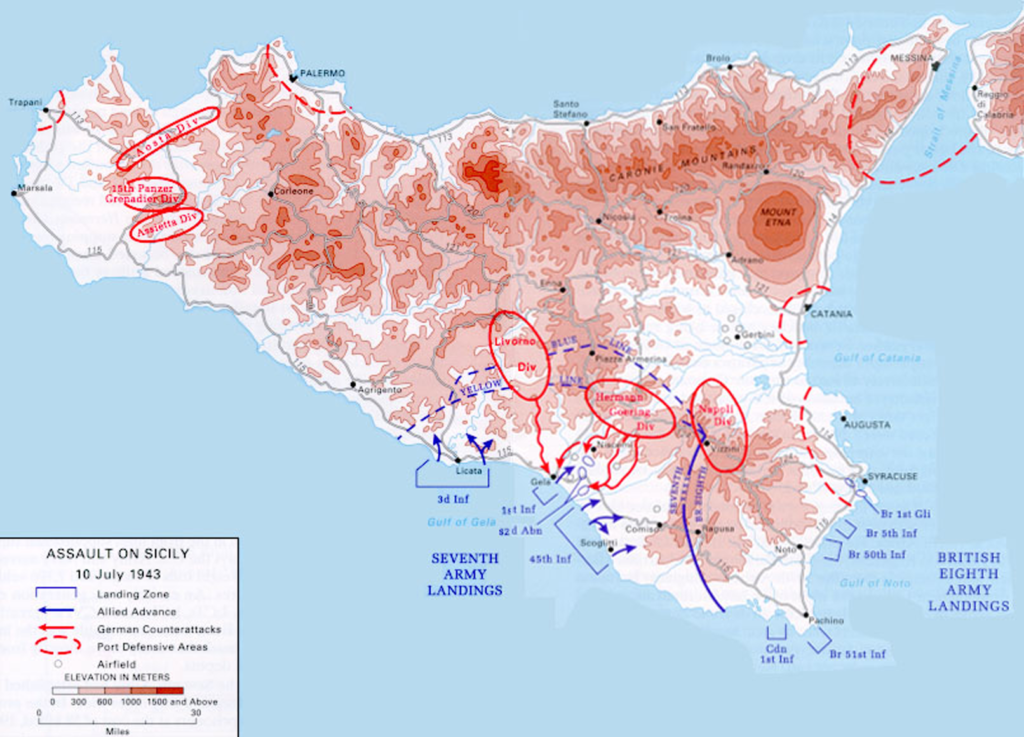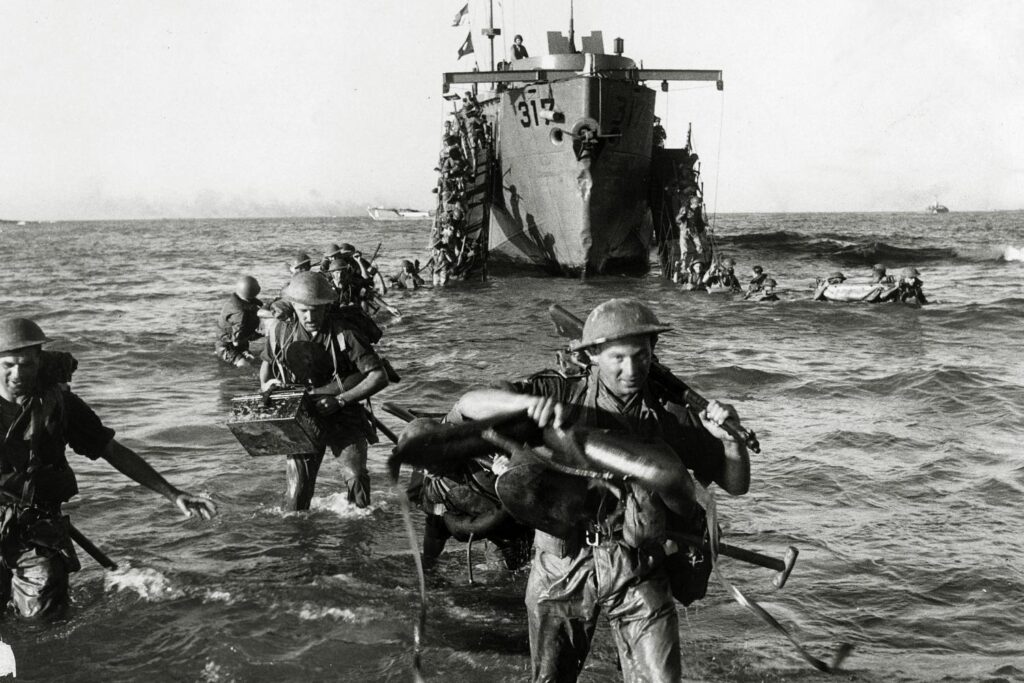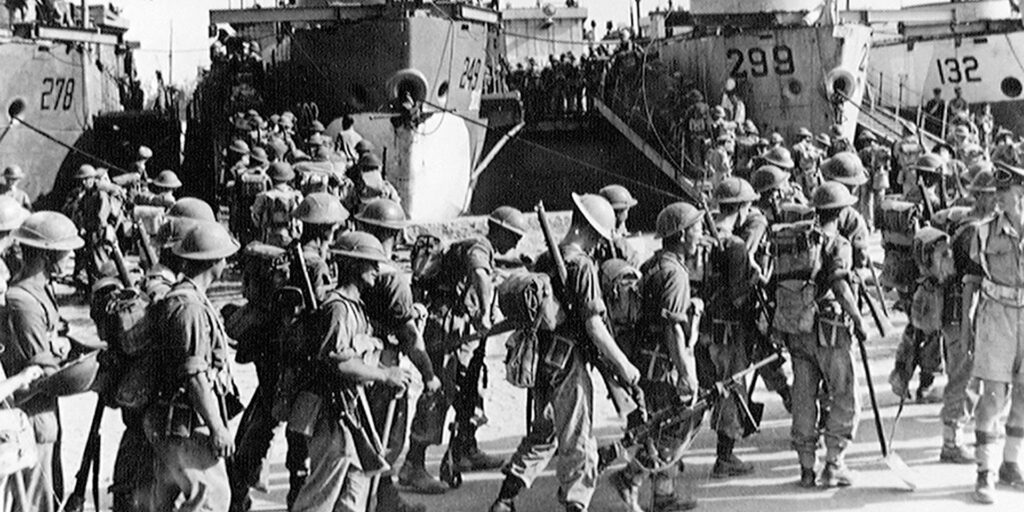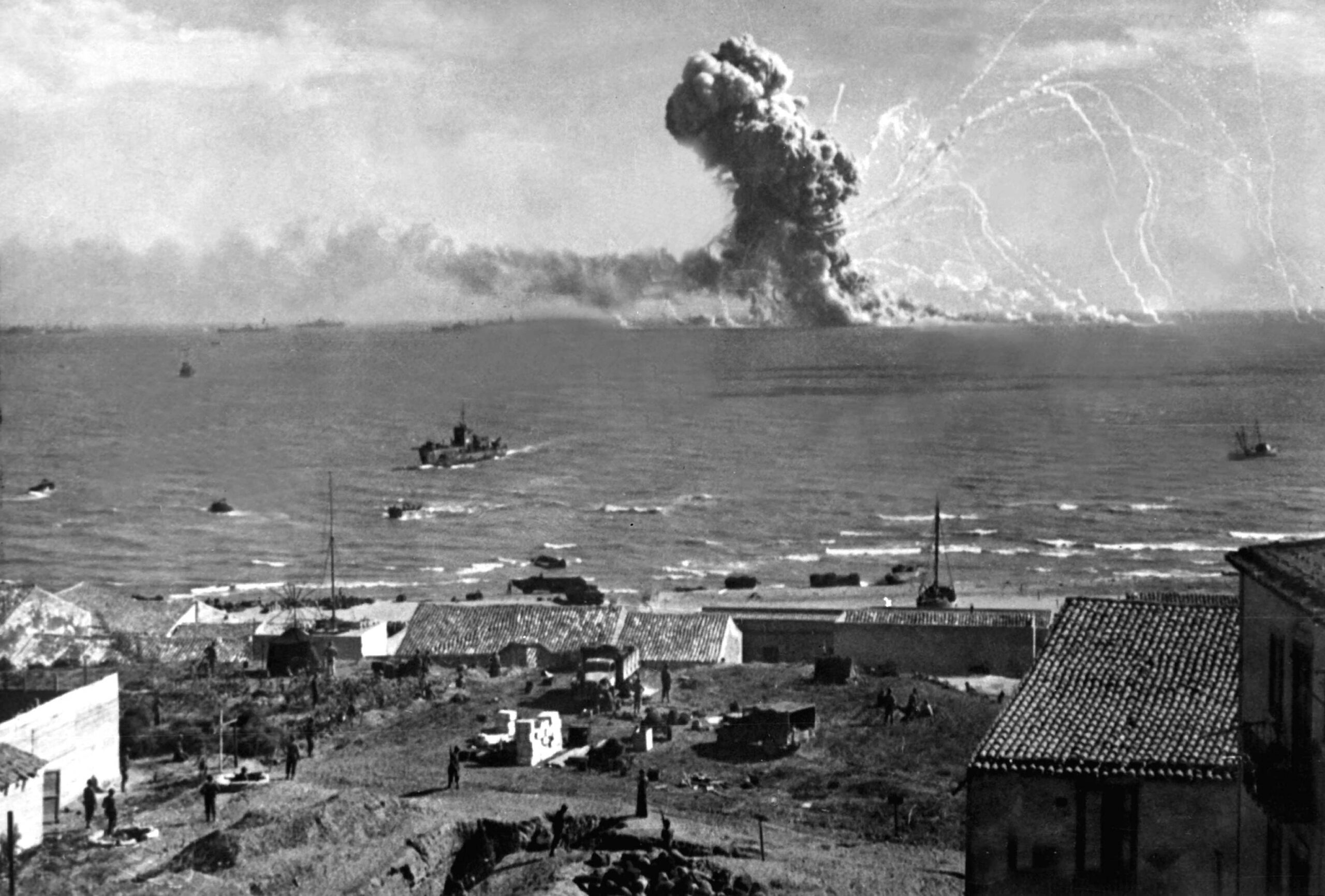The July 1943 invasion of Sicily (Operation Husky) was a masterstroke of military planning and execution. It freed much of the Mediterranean Sea for Allied shipping, inflicted more than 175,000 casualties on the Axis forces, took down Benito Mussolini’s government, and knocked Italy out of the war. It’s stunning, in retrospect, to consider that it almost didn’t happen.
The Planning and Execution of Operation Husky
American planners believed invading anything but the Italian mainland would be an irrelevant venture. At the Casablanca Conference in January 1943, the British convinced the U.S. that clearing Sicily would mean clearing the Mediterranean of Axis aircraft and ships.

Before the invasion, code-named Operation Husky, could begin, the Allies needed to reduce the island’s defenses. The Allied bomber force began hitting targets in Sardinia, Sicily, southern Italy, and Greece to keep the Axis guessing where the next attack would be. Allied forces also bombed and captured small islands with airfields to keep them from being used against the Husky invasion force.
Most critically, the British launched Operation Mincemeat, a deception operation that dropped a corpse dressed as a Royal Marines officer off the coast of Spain. The corpse carried with it disinformation papers identifying Operation Husky as an invasion of Greece, knowing Fascist Spain would share the intelligence with the Germans.
The ruse worked like a charm. The Germans moved three panzer units from Sicily to Greece, along with a panzer division from France and two on the Eastern Front, reducing pressure on the Red Army there. They also sent Field Marshal Erwin Rommel to take command. Sicily was as ready as it would ever be.
Invasion of Sicily 1943: Operation Husky and its Impact
On the night of July 9, 1943, the American 82nd Airborne and British 1st Airborne began landing over the island. However, due to a strong wind, they were scattered, some far from their units and objectives. Despite the winds and difficulty gathering in the dark, many were able to form fighting units and seize objectives.

The wind also worked in favor of the Allied amphibious landings because the island’s defenders didn’t expect anyone to try and invade in winds up to 70 miles per hour. The British 8th Army and 1st Canadian Infantry Division landed in the southeast on the Gulf of Avola. The U.S. 7th Army landed in the southwest, along the Gulf of Gela. The idea was to cut off southern Sicily, then push northward.

Although the wind and other unforeseen surprises hampered the landings, the Italians’ defense plans didn’t include stopping a landing on the beaches, so the Allies were able to land relatively quickly in most areas. By the time the sun rose on July 10, the Americans had captured their western objective of the port city of Licata. By evening, seven Allied divisions had landed, and the British captured the city of Syracuse.
With southern Sicily cut off as planned, the Allies needed to capture key airfields and prepare to move north. Gen. George S. Patton’s Seventh Army was in place to prevent Axis reserve forces from flanking the British 8th Army. The Germans and Italians defending the island were not counterattacking as a unified defense. Instead, various elements had been attacking the invaders piecemeal.
On July 13, the Allies’ next step became a thrust north to cut the island in two. Montgomery’s 8th Army would lead that thrust while Patton defended its flank. But Patton didn’t stay put; he instead divided his Army into two Corps and sent the Provisional Corps under Maj. Gen. Geoffery Keyes north along the coast to capture Agrigento.

Patton’s next move was sending his II Corps under Maj. Gen. Omar Bradley north toward Palermo. His forces overran the Italian defenders while pushing the Germans back towards the west. On July 22, while Montgomery and his 8th Army were fighting entrenched German positions in the east, Patton’s forces were taking Palermo on the northern coast.
By August 1, Montgomery was able to renew his attack on German positions; the goal was taking Adrano, a heavily defended town near the base of Mount Etna. After the fall of Adrano, the British were able to advance much faster. Meanwhile, Patton’s forces were moving east along the northern coast and encountering heavy defenses. To defeat them, Patton made a series of small amphibious landings behind entrenched defenders.
The Success of Operation Husky
Even before the end of July, the Axis defenders knew they’d been beaten. From July 29 onward, they were doing their best to buy time for an evacuation to mainland Italy from Messina, on Sicily’s northeast coast. The full-scale withdrawal took place between August 11-17, with elements of the U.S. 3rd Division entering the city on August 16.

Operation Husky took just six weeks and was a resounding success. It was not without its casualties and lessons learned. Axis ships and aircraft managed to devastate the Allied invasion in some places. The panzers from the German Hermann Goring Division managed to attack the U.S. beachhead and wreak havoc on British forces around Mount Etna. Italian anti-aircraft guns also made it impossible to attack the Axis evacuation from the air.
Although the Axis managed to withdraw more than 135,000 combined troops, they lost many more killed, wounded, or captured. The Allies suffered some 5,700 killed, along with nearly 16,000 wounded and more than 3,000 missing. As the Axis were being beaten on Sicily, Italian dictator Benito Mussolini lost a no-confidence vote in the government and was arrested. Around two weeks after capturing Messina, the Allies would invade the Italian Peninsula.
Read About Other Battlefield Chronicles
If you enjoyed learning about the allied invasion of Sicily, we invite you to read about other battlefield chronicles on our blog. You will also find military book reviews, veterans’ service reflections, famous military units and more on the TogetherWeServed.com blog. If you are a veteran, find your military buddies, view historic boot camp photos, build a printable military service plaque, and more on TogetherWeServed.com today.

0 Comments